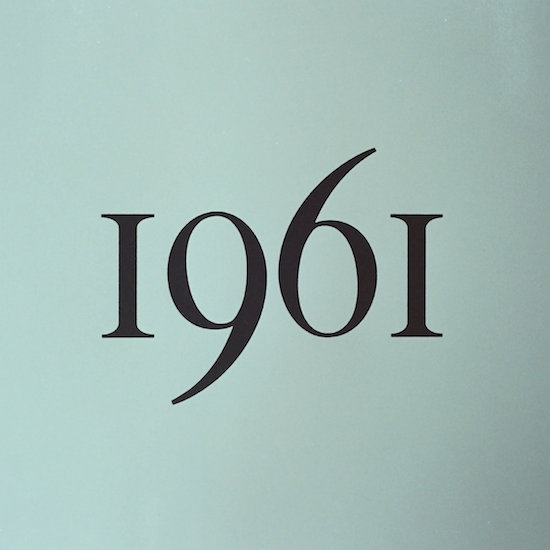For over three decades, the duo of Klive and Nigel Humberstone have not merely doggedly pursued their artistic trade as In The Nursery, but approached a sui generis state – there really isn’t any other act quite like them. Inspired by punk’s aftermath, originally tagged goth or industrial or post-punk or more during their initial run of releases in the 1980s, they never entirely stopped in one place, with lush string-driven explorations of identity, language and the self, commissioned soundtracks to classic silent films, or a fascinating reincorporation of rougher rock textures as well as contributing their own vocals without ever simply going back into their past.
That said their newest, 1961, is indeed about going back, but in a conscious and clever sense – 1961 is the year of their birth, and in exploring a variety of historical and cultural touchstones from the time via their own lens, this is the next in their series of careful, thoughtful concept albums that have also been a touchstone of their work. The opening ‘Until Before After’ may seem more 1981 than 1961 but in many ways that’s a key point – long-divorced from its specific context, the idea of ‘post-punk’ as bass-driven gloom renders it something that can be reshaped anywhere as desired. The steady, slow rumble, set against sweeping, almost majestic acoustic and electronic orchestration, as well as live drums from David Electrik, who features intermittently throughout, sets a compelling tone, as does the reappearance of their most regular collaborator, Dolores Marguerite C, on one of her three vocal performances on the album.
As an overall aesthetic experience, 1961 is centered around the sense that something’s going wrong somewhere – its centrepiece, ‘Grand Corridor,’ references old abandoned hospitals and reports of hauntings, and feels as much an elegy to the NHS as it does to a physical location. ‘Pacify’ takes its inspiration from Joseph Heller’s Catch-22, and it’s the closest thing the album gets to a stirring folk song, perhaps appropriate given that era’s interest in the form. Yet there’s gentle humour implied in 1961 as well as looming fear – the understated, almost church-organ-like ‘Consul,’ for instance, is described in the linernotes as built around recordings of a 1961 Ford Consul rather than, say, any sense of echoes of the Roman Empire.
There’s also awe. ‘Retrofire’ features recordings from Yuri Gagarin, referencing his descriptions of the experience of reentry from orbit as synths and growling bass intertwine, and the concluding ‘The Earth Was Blue’ returns to the theme of the space age from the point of view of both Gagarin and Alan Shepard considering our planet from above. Piano-led, with soft strings and a quick pulsing bass part, it captures distant regard of something that could yet verge into catastrophe. That thankfully wasn’t the case then, although now perhaps the echoes are a little too clear.


